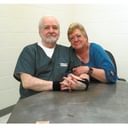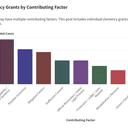Just days before the scheduled execution of Donald Beardslee in California, the Los Angeles Times has called for his clemency while questioning the even-handedness of the whole system. The editorial concludes that the death penalty is a “lie” to the people of California:
Donald Beardslee was 38 years old in 1981 when he shot one woman and strangled and slashed another in San Mateo County, retaliation for a soured drug deal. He is now 61. So many years have passed since a jury sentenced him to die in the gas chamber that the infamous green room at San Quentin Prison has become a grisly relic. Beardslee’s execution, now scheduled for Wednesday, will be by lethal injection.
It’s taken state prosecutors nearly 24 years to arrive at this moment, and Beardslee’s case alone has probably cost taxpayers more than $1 million. Yet his winding path to the death chamber is hardly unusual, and his case demonstrates the caprice, unfairness and waste woven through California’s death penalty.
In concept, many Californians seem to approve of capital punishment; as voters, they regularly declare additional crimes subject to the death penalty. California law now lists more than 30 “death-eligible” special circumstances, more than any other state.
The broad latitude of prosecutors to ask for death and the willingness of juries to comply has put 640 men and women on death row, the largest condemned population in the nation.Texas, which executes its condemned prisoners more swiftly, is second with 455 inmates.
Beardslee was subject to the death penalty because he committed multiple murders. So was Leonard E. Brown. In 1981, the Compton man, then 23, was convicted of two murders committed during a four-day PCP-fueled spree that also included rape, assault and robbery. But the Los Angeles jury that heard Brown’s case sentenced him to life without parole instead of death. That same year an Orange County judge sentenced another man, William Caywood, to life after a jury deadlocked over the death penalty. Caywood murdered his two bosses at the gas station where he worked, shooting them execution style.
Three men, each convicted of two murders, yet only one is sentenced to death.
California does more than many states to keep the innocent from being executed and to ensure that those condemned get fair trials. The appeals and assurances may take decades to work their costly way through the courts, which is another matter. But in the whole complicated process, nothing addresses the inequality of the death penalty’s application. Judges in California cannot throw out a capital sentence on the ground that defendants who committed similar crimes were not sentenced to die.
So few California lawyers are qualified to handle death-penalty appeals that 248 inmates still have no attorney appointed for at least one phase of this review process. So much cost and time are involved in these complex challenges that Beardslee’s execution would be only the 11th since voters reinstated the death penalty in 1978. But speeding up the process would necessarily mean accepting less-qualified lawyers for the appeals and increasing the risk of executing defendants who are innocent or were unfairly convicted.
Beardslee confessed to his crimes, and prosecutors painted him as a calculating, remorseless killer. Those were among the factors that led the jury to recommend death. But Beardslee’s appellate lawyers argue that extensive brain damage he suffered in accidents as a child and young man put him under the sway of a domineering accomplice who directed the murders.
The original trial jury heard about those accidents but not about the lasting damage they might have caused or the effect on his personality and behavior. The brain-imaging technology now available didn’t then exist. His lawyers’ contentions on that damage form the basis of a clemency petition now before Gov. Arnold Schwarzenegger.
The governor should grant that petition and at least commute Beardslee’s sentence to life without the possibility of parole. But Beardslee’s case also demonstrates the impossible position California is now in: By erecting a death penalty scheme that sentences so many to death and executes so few, the state lies to itself and the people about what it’s doing.
(Los Angeles Times, January 17, 2005) (emphasis added). See Clemency, Editorials, and Upcoming Executions.
News
Los Angeles Times Urges Clemency for Beardslee While Challenging the Arbitrariness of the System
By Death Penalty Information Center
Posted on Jan 17, 2005 | Updated on Mar 14, 2025
Citation Guide



